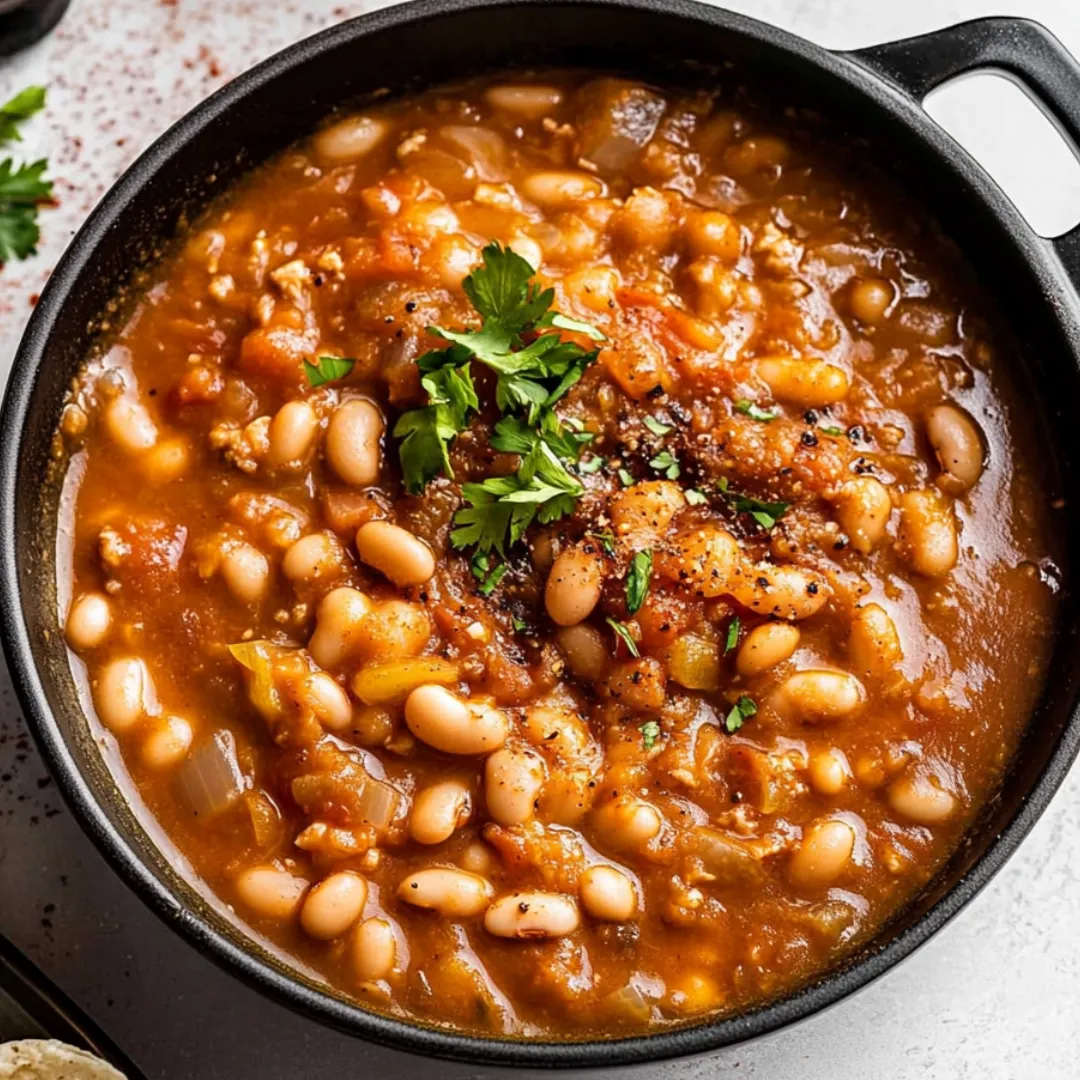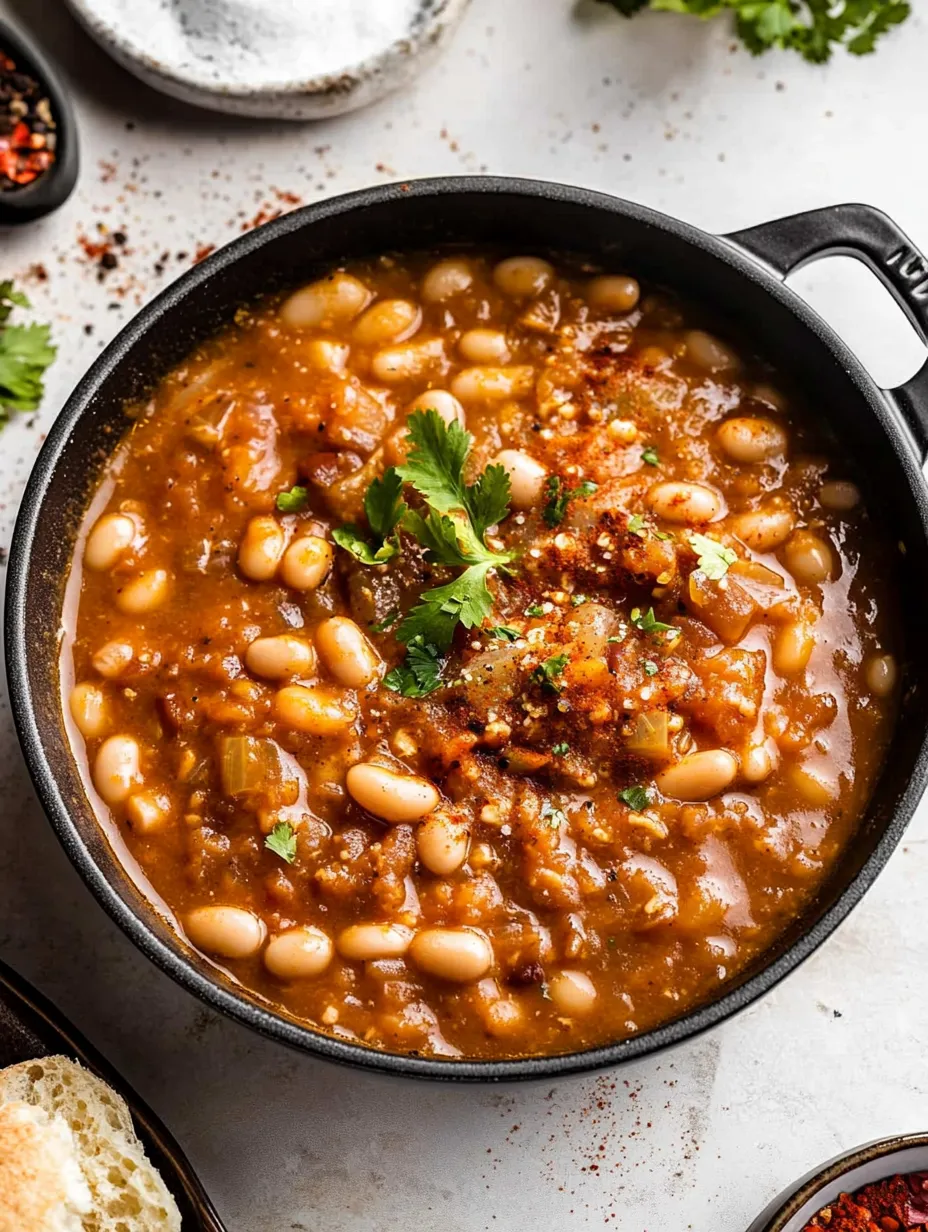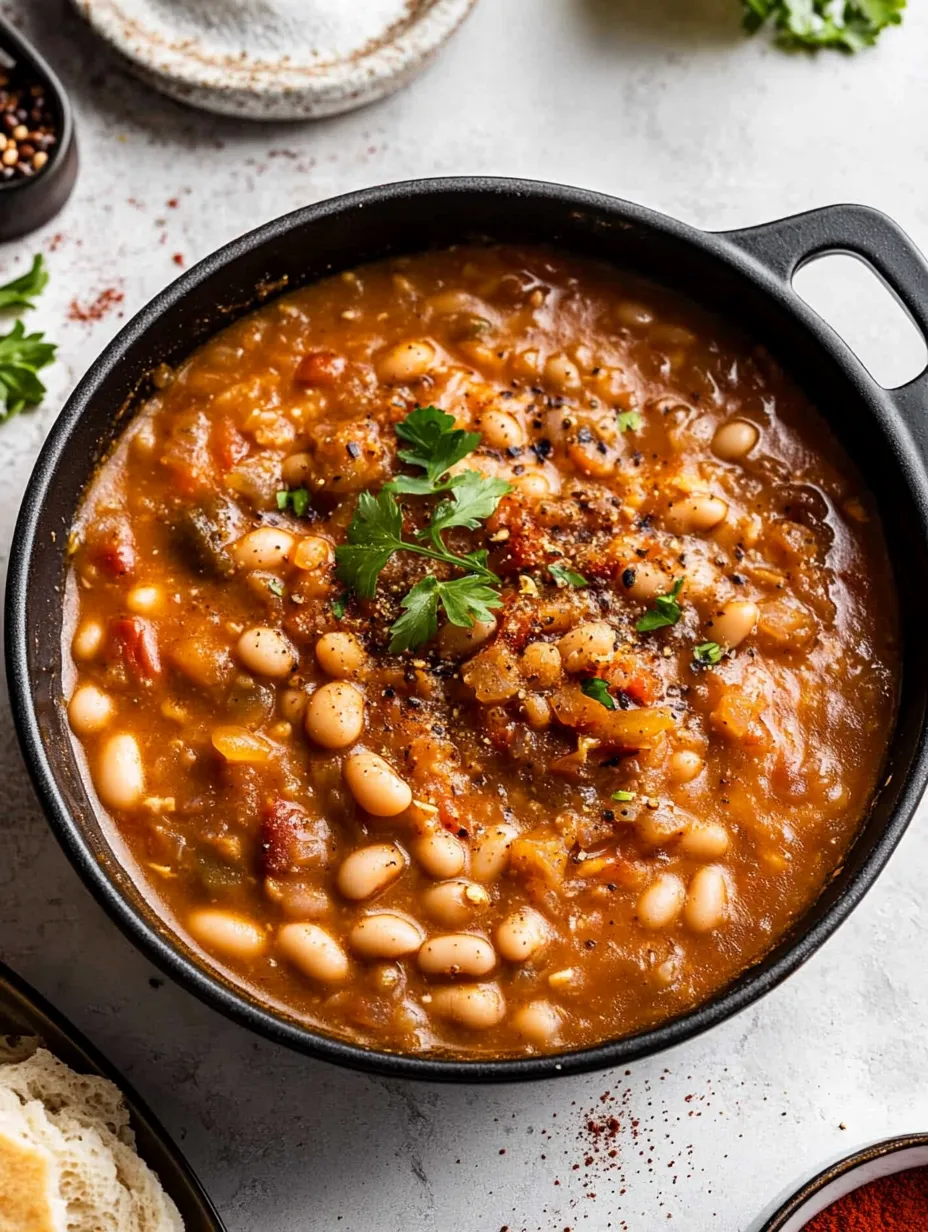 Pin it
Pin it
This comforting Moroccan bean stew transforms humble white beans into a richly spiced, aromatic dish that will transport your taste buds straight to North Africa. The magic happens as onions, garlic, fresh tomatoes, and a perfect blend of spices simmer together, creating a flavor-packed sauce that infuses the creamy white beans with warmth and depth. Ready in just 30 minutes using canned beans, this one-pot wonder offers authentic international flavor without demanding exotic ingredients or complicated techniques.
I stumbled upon loubia during a cooking class where the instructor shared this family recipe passed down through generations. What struck me most was how such simple ingredients created such complex flavor. When I made it for my family, my husband—who typically reaches for meat-heavy dishes—went back for seconds and declared it "surprisingly satisfying" despite being vegetarian. The rich tomato base with its warm spices has since become our go-to comfort meal on busy weeknights.
Ingredients
- White beans: The hearty foundation of this stew. Cannellini beans offer the perfect creamy texture and mild flavor that absorbs the aromatic spices. Their slightly larger size holds up beautifully during cooking without becoming mushy.
- Fresh tomatoes: Create a sweet, bright base for the sauce. Choose ripe, in-season tomatoes for the best flavor; their natural sweetness balances the earthy spices perfectly.
- Onion and garlic: Essential aromatic building blocks that create depth. Take time to sauté these properly until translucent but not browned for the cleanest flavor.
- Ground cumin: Adds earthy warmth and authentic North African character. Freshly toasted and ground cumin offers the most vibrant flavor if you have time to prepare it.
- Paprika and smoked paprika: The regular paprika adds color and mild pepper flavor, while the smoked variety brings a subtle woodsy essence. The combination creates dimension that makes the stew taste like it's been cooking for hours.
- Turmeric: Contributes a golden hue and slightly earthy undertone. Beyond color, it adds a distinctive flavor that's essential to Moroccan cuisine.
- Fresh herbs: Brighten the finished dish with chopped cilantro or parsley. Their fresh, green notes cut through the richness and add visual appeal to the deep red stew.
 Pin it
Pin it
Instructions
- Create the flavor foundation:
- Begin by heating 2 tablespoons of olive oil in a large, heavy-bottomed pot over medium heat. Add one finely diced onion and 3 minced garlic cloves, stirring frequently to prevent burning. The key here is patience—cook them slowly until the onion becomes translucent and soft, about 5-7 minutes. This slow cooking process allows the onions to release their natural sweetness, creating a foundation of flavor that permeates the entire stew. You'll know they're ready when they're soft with no resistance when pressed with a spoon, but not yet browning.
- Develop the tomato base:
- Add 3 large, diced fresh tomatoes to the softened onion and garlic. Continue cooking and stirring occasionally for about 5 minutes, allowing the tomatoes to release their juices and begin breaking down. You want them to become soft and slightly mushy, creating a natural sauce. The tomatoes will initially hold their shape, then gradually collapse and mix with the onions and garlic. This process unlocks their natural sweetness and umami flavors that form the heart of the stew.
- Incorporate the spice blend:
- Once the tomatoes have softened, it's time to add the signature Moroccan spice blend. Add 1 teaspoon each of ground cumin, paprika, and ½ teaspoon each of smoked paprika and turmeric, along with salt and freshly ground black pepper to taste. Stir constantly for about one minute to toast the spices in the oil, which dramatically enhances their flavors and aromas. You'll know they're properly bloomed when the mixture becomes fragrant and slightly darker in color. This brief cooking of the spices directly in oil is crucial for releasing their essential oils and creating depth of flavor.
- Combine and simmer to perfection:
- Add 2 cups of vegetable broth, 2 tablespoons of tomato paste, and 2 cans (15 oz each) of drained and rinsed white beans to the pot. Stir gently to combine all ingredients without breaking the beans. Bring the mixture to a gentle simmer, then reduce the heat to maintain a slow bubble. Allow everything to cook together for 10-15 minutes uncovered, stirring occasionally. During this time, the liquid will reduce slightly, the flavors will meld, and the sauce will thicken to a rich consistency that clings to the beans. The stew is ready when it has thickened slightly but still has enough sauce to spoon over bread or rice.
I learned about the importance of properly blooming spices after serving a rather flat-tasting version of this stew to friends. An elderly Moroccan neighbor later explained that the secret to depth of flavor was allowing the spices to "dance in the oil" before adding any liquid. The next time I made loubia, I took care to let the spices sizzle in the oil for a full minute, and the difference was remarkable—the stew tasted as if it had been simmering for hours rather than minutes.
Instant Pot Method
For those with an Instant Pot or pressure cooker who prefer using dried beans, the process requires pre-planning but yields excellent results with deeper flavor development.
Begin by soaking 1 cup of dried white beans overnight or for at least 8 hours. This step is crucial as it ensures even cooking and proper texture. After soaking, drain and rinse the beans thoroughly.
Set your Instant Pot to sauté mode and follow the same process for creating the tomato and spice base as in the stovetop method. Once you've added the drained beans and vegetable broth, secure the lid and set to pressure cook on high for 17 minutes.
Allow natural release for 15 minutes after cooking completes, then carefully perform a quick release of any remaining pressure. If the sauce seems too thin, use the sauté function to simmer until it reaches your desired consistency.
 Pin it
Pin it
Creative Variations
While traditional loubia is perfect in its simplicity, there are several delicious variations you might explore:
For a hint of brightness, add the zest of half a lemon along with the spices. The citrus notes complement the earthy beans and tomatoes beautifully.
Create a richer version by stirring in a tablespoon of harissa paste with the tomato paste. This Moroccan chile paste adds complexity and a gentle heat that builds pleasantly with each bite.
For a one-pot complete meal, add diced carrots and celery with the onions, and stir in a handful of baby spinach or chopped kale during the last few minutes of cooking. The additional vegetables add nutrition and texture while maintaining the stew's authentic character.
After making this dish countless times, I've discovered that the quality of your spices makes an enormous difference in the final flavor. I now store my ground spices in the freezer and replace them every six months to ensure maximum potency. When I have extra time, I toast whole cumin seeds in a dry pan until fragrant before grinding them fresh for this dish. The aroma that fills the kitchen when adding freshly ground cumin to the simmering tomatoes is intoxicating and elevates the entire dish to restaurant quality. This small extra step transforms a simple weeknight meal into something truly special that showcases the beautiful simplicity of Moroccan home cooking.
Frequently Asked Questions
- → Can I use different types of beans?
- Yes, but stick to medium-large white beans like Cannellini, Navy, or Great Northern for best results. Smaller beans may overcook, while colored beans will change the traditional appearance of the dish.
- → Is this dish spicy?
- No, this is not a spicy dish. The paprika and other spices add warmth and depth but not heat. If you'd like some spice, add chili flakes to taste at the end.
- → Can I make this in advance?
- Yes! This stew actually improves with time as the flavors meld. Make it up to 2 days ahead and store in the refrigerator, or freeze for up to a month.
- → What can I serve with Loubia?
- Traditionally, it's served with Moroccan bread, but it also pairs well with pita, naan, rice, or couscous. Add a dollop of yogurt or crumbled feta on top for extra richness.
- → Do I have to soak the beans when using an Instant Pot?
- Yes, for the best texture and cooking time specified in this recipe, soaking is recommended. If you skip soaking, you'll need to increase the pressure cooking time significantly.
